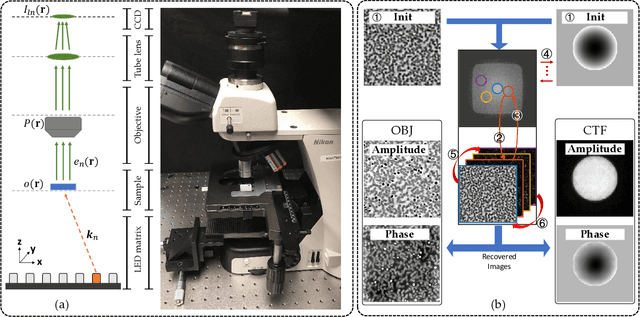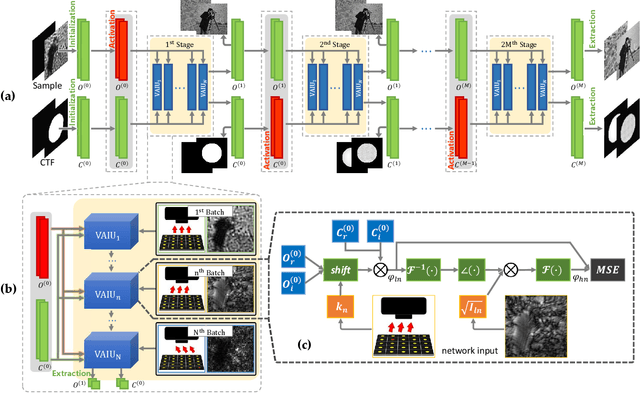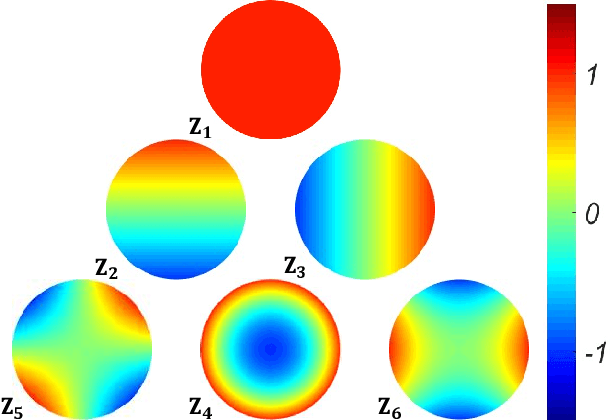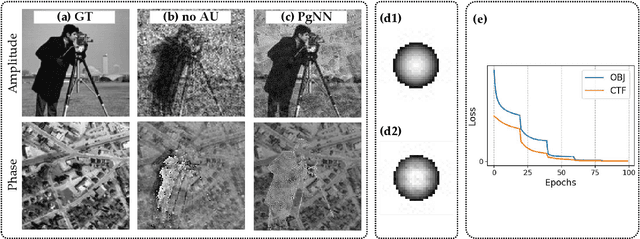PgNN: Physics-guided Neural Network for Fourier Ptychographic Microscopy
Paper and Code
Sep 19, 2019



Fourier ptychography (FP) is a newly developed computational imaging approach that achieves both high resolution and wide field of view by stitching a series of low-resolution images captured under angle-varied illumination. So far, many supervised data-driven models have been applied to solve inverse imaging problems. These models need massive amounts of data to train, and are limited by the dataset characteristics. In FP problems, generic datasets are always scarce, and the optical aberration varies greatly under different acquisition conditions. To address these dilemmas, we model the forward physical imaging process as an interpretable physics-guided neural network (PgNN), where the reconstructed image in the complex domain is considered as the learnable parameters of the neural network. Since the optimal parameters of the PgNN can be derived by minimizing the difference between the model-generated images and real captured angle-varied images corresponding to the same scene, the proposed PgNN can get rid of the problem of massive training data as in traditional supervised methods. Applying the alternate updating mechanism and the total variation regularization, PgNN can flexibly reconstruct images with improved performance. In addition, the Zernike mode is incorporated to compensate for optical aberrations to enhance the robustness of FP reconstructions. As a demonstration, we show our method can reconstruct images with smooth performance and detailed information in both simulated and experimental datasets. In particular, when validated in an extension of a high-defocus, high-exposure tissue section dataset, PgNN outperforms traditional FP methods with fewer artifacts and distinguishable structures.
 Add to Chrome
Add to Chrome Add to Firefox
Add to Firefox Add to Edge
Add to Edge